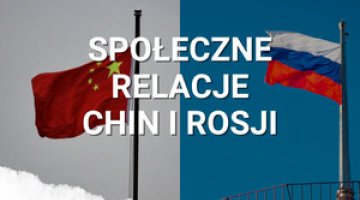Turkmenistan: concerns over Russia’s growing activity on the regional gas market
On 12 August, Turkmenistan’s Ministry of Foreign Affairs published a statement on their country’s gas cooperation between the Russian Federation, Uzbekistan and Kazakhstan. In this document, the vice-president of the state-owned oil and mining company Turkmengaz criticised Russian reports that Russia might expand its gas cooperation with Kazakhstan and Uzbekistan, and also involve other countries (such as China) in it, as well as the Russian Federation’s desire to use the Central Asia-China gas pipeline to export its own gas to China. The statement signalled that Turkmenistan sees Russia’s increased ‘gas activities’ towards China and in Central Asia as a threat to its own interests, which are tied to gas cooperation with China, as Turkmenistan is dependent on this country as an economic partner and purchaser of its gas. Indeed, more than 76% of gas exports from Turkmenistan go to China; natural gas accounts for about three quarters of these exports. In this context, the government in Ashgabat has sought to preserve the existing arrangements between Turkmenistan, Kazakhstan, Uzbekistan and China regarding the rules that govern the use of regional gas infrastructure, in order to ensure that only Turkmen, Uzbek and Kazakh gas is transported via the Central Asia-China pipeline.
The statement coincides with Turkmenistan’s stepped-up energy diplomacy, which is aimed at opening alternative routes to gas cooperation with Russia and tapping into new export markets. In recent weeks, Turkmenistan has been pushing for a return to talks with the EU, Azerbaijan and Turkey on the Trans-Caspian gas pipeline. In late July, its foreign ministry published a statement that expressed the country’s readiness to pursue this project with its partners. Turkmen gas could flow via this route through the Caspian Sea and South Caucasus countries to the EU; according to the ministry, it could transport 30 bcm of gas per year. The EU’s interest in securing supplies of fuel from directions other than Russia also favours a return to talks on this project. The first discussions about building this gas pipeline took place in the late 1990s. In 2011, the European Commission (EC) received a mandate to launch negotiations with Turkmenistan and Azerbaijan on constructing the pipeline, but interest in this project began to wane due to the effects of the shale revolution and the accelerated energy transition in the EU. It appears that Turkmenistan is now more eager to reactivate this project. In late July, officials of its foreign ministry announced that they had received the EC’s approval to organise a meeting between President of the European Commission Ursula von der Leyen and Turkmenistan’s president Serdar Berdimuhamedov to discuss this venture later this year.
Meanwhile, in June Turkmenistan signed a contract to export gas to Iran. According to reports from RFE/RL’s Turkmen service and the independent media outlet Turkmen.news, Berdimuhamedov held unofficial consultations with US officials on the issue of entering into a deal with sanctions-hit Iran. The contract, signed in June, will ultimately allow Turkmenistan to supply Iran with 10 million cubic metres of gas per day. The contract’s details, including its duration, annual volumes and the price of the purchased fuel have not been disclosed.
Commentary
- The publication of the sharply-worded statement on cooperation between Russia, Uzbekistan and Kazakhstan included an overtly critical remark (which was undoubtedly consulted at the highest level) from the vice-president of a state-owned company, who is also de facto an official of the state. This is an unusual development by the standards of Turkmen politics. Turkmenistan, formally neutral but in reality isolationist, is an extremely authoritarian state with features of totalitarianism (including a cult of personality based around the leader and his family) which hardly ever speaks out on global events, relations with other countries or its own political and economic strategy. Therefore, this statement indicates that Turkmenistan sees Russia’s recent moves on the regional gas market as posing a significant threat to its own interests. It is striving to maintain its position as the main supplier of pipeline gas to China while checking Russia’s growing ambitions and activity in the regional gas sector.
- Turkmenistan is the leading gas production in Central Asia. It also has some of the largest proven gas reserves in the world. Over the past few years, it has been selling the lion’s share of its production to China. According to information contained in the statement by an official from the Turkmen foreign ministry, the country’s current export commitments to China total 40 bcm of gas per year. A contract for gas supplies to Russia is also in force; these shipments increased to 10 bcm per year between 2019 and 2021. Gas exports are a key source of Turkmenistan’s budget revenues.
- In 2019-22, some 30-35 bcm of Turkmen gas was delivered to China every year via three lines of the Central Asia-China gas pipeline that run through Uzbekistan and Kazakhstan and have been extended since 2007. Turkmengaz’s statement in August emphasised that this route, with a capacity of 55 bcm per year, was built with Chinese and Turkmen funds and is currently also being used by Kazakhstan and Uzbekistan to transport their own gas to China. At the moment, Turkmenistan sees no possibility of increasing the number of countries that use this pipeline. For some time now China has been pushing for the construction of a fourth line; this would be primarily fed with Turkmen gas and increase the route’s total capacity to 85 bcm per year (see ‘The China – Central Asia Summit. Beijing is still forced to cooperate with Moscow’).
- Since most Russian gas exports to the EU were halted in 2022, Gazprom has been looking for opportunities to increase its gas supplies to other customers. China is the most promising market in this context. Gazprom has been steadily expanding the capacity of the Power of Siberia-1 pipeline, aiming to reach a target of 38 bcm in 2025 (the pipeline is expected to carry 22 bcm of gas in 2023). In the coming years, the company also plans to extend the 10 bcm pipeline from its fields in Sakhalin to China (the so-called Power of Siberia-3). However, these routes will not be enough for Gazprom to return to the pre-war volumes of gas exports, so it has been holding talks with China on building the Power of Siberia-2 gas pipeline through Mongolia with a target capacity of 50 bcm per year. However, the parties are yet to agree on the details of the project and/or the supplies of additional volumes of Russian gas, as it remains unclear whether China will need it in such quantities. The fastest and least financially draining way for Gazprom to increase its supplies to China would be to use the existing transmission infrastructure of its competitors for the Chinese market, namely the Central Asian countries, particularly the one that runs from Turkmenistan through Uzbekistan and Kazakhstan. This is why over the past year Russia has stepped up its efforts to strengthen its presence on the gas markets of the latter two countries.
- So far, the only product of Russia’s stepped-up activities in the Central Asian gas sectors, which Turkmenistan has criticised, is a two-year contract between Gazprom and Uzbekistan to supply small amounts of gas from the Russian Federation (2.8 bcm per year). These shipments are due to start on 1 October 2023, and will be carried out in reverse mode via the Central Asia-Center gas pipeline, which is possible under a transit agreement with Kazakhstan. Similar talks have been ongoing regarding the purchase of Gazprom’s gas by Kazakhstan (according to its energy minister, imports of some 4 bcm of gas per year are under consideration), as well as the construction of new pipelines to reach the north and east of that country. Both Uzbekistan and Kazakhstan have stressed their interest in obtaining gas from Russia on favourable but commercial terms that would be free of any political commitments. However, these two countries have both rejected Russia’s initial proposal to build a gas pipeline to China (via Kazakhstan) or to allow Russia to use the Central Asia-China pipeline. Both countries saw that offer as an attempt to take control of key sectors of their economies.
- The growing competition and Turkmenistan’s concerns over Russia’s actions in the region are probably the most important reasons for Turkmenistan’s stepped-up gas diplomacy. Its goal is to at least partially diversify the country’s export markets, including through the reactivation of the old project for the Trans-Caspian gas pipeline and the announced resumption of talks on potential gas exports to the EU. The primary purpose of this initiative is to send a signal to Russia that Turkmenistan is capable of taking steps that run counter to Russia’s interests (Russian officials have been criticising Turkmenistan’s open stance on gas exports to the West since last year). However, it seems unlikely that the Trans-Caspian gas pipeline will be built, at least in the near future, due to the political and technological challenges of building routes across the Caspian Sea, the high costs, the lack of binding agreements and the unknown long-term gas demand from European countries.
- President Berdimuhamedov’s successful negotiations with the US, which reportedly allowed Turkmenistan to sign the agreement with Iran, are another indication of Turkmenistan’s determination to secure its own interests in the key sector of the country’s economy and its desire to diversify its gas trade. Under the contract, Turkmen gas exports are set to increase from 4.5 million cubic metres to 8-10 million cubic metres per day. In addition, Turkmenistan will be able to increase its swap deliveries through Iran to Azerbaijan, which have been ongoing since January last year and are not covered by the sanctions. This will allow Turkmen gas exports onto the Azerbaijani market to increase by a projected 70% in 2023.




